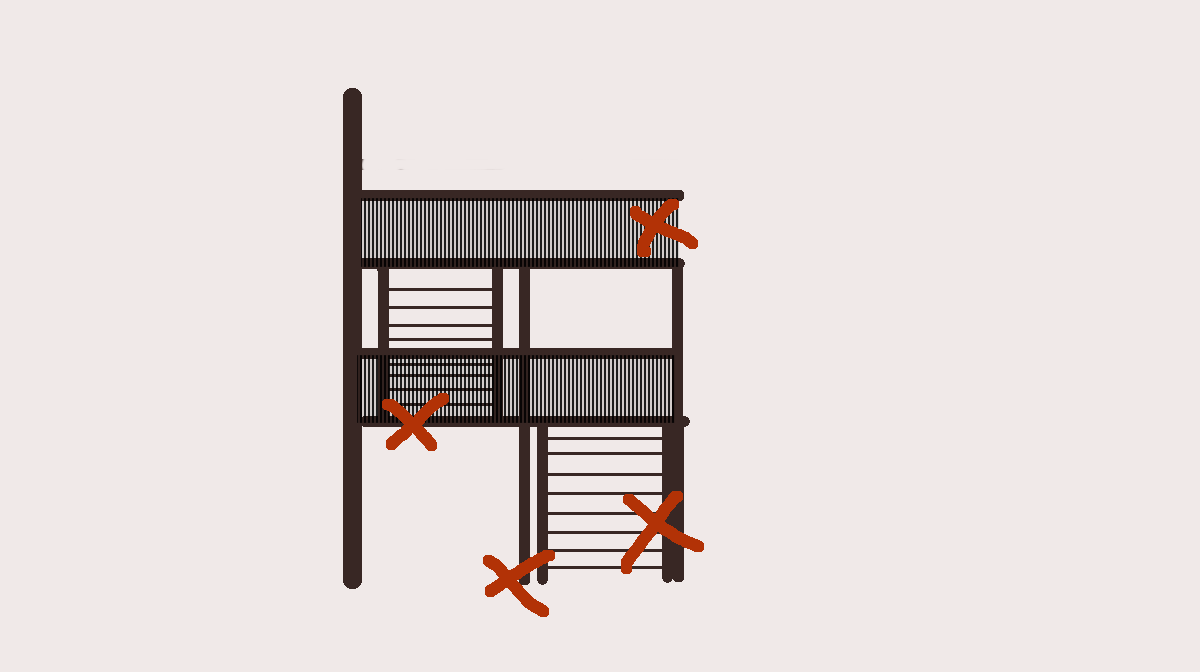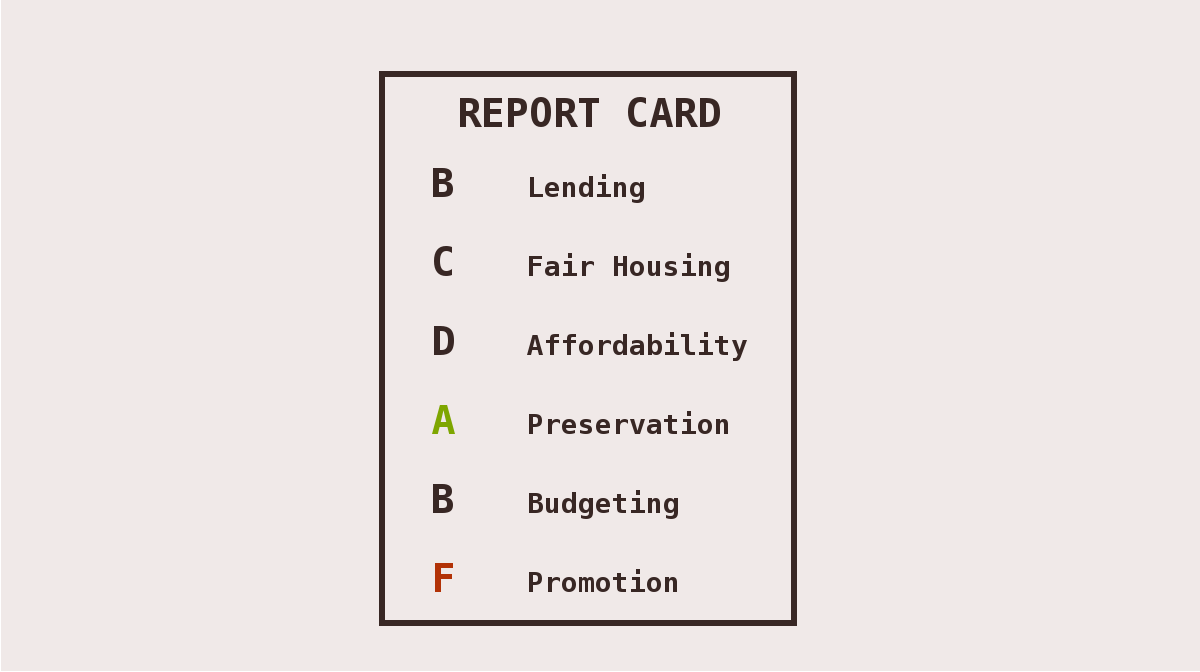When I say the word "balcony" most of you will think of Juliet pining for Romeo. Chicago's balconies (or, as we call them, "porches,") are a little different. They're big vertical structures attached to the rears of buildings serving as fire escapes. Unlike the black metal fire escapes that come to mind when you think of New York City, Chicago's renters almost invariably will have a story about moving in or out down a rickety wooden back porch.
When I first moved to Chicago in the late 90's our low rise buildings were almost universally adorned with these wooden monsters, all painted in a pale gray-blue shade known to hardware stores citywide as "porch paint" or "Chicago Grey." These porches were mandatory for residences to comply with the city's fire code, minimizing the chance that an occupant would have to run through a fire in order to escape a burning building. But the porches were old, the paint (probably loaded with poisonous lead) was flaking, many of them as old as the buildings themselves.
By the turn of the century new buildings were popping up with porches made of pressure-treated lumber or wrought iron which didn't need to be slathered with porch paint, changing the color of our city's back alleys by removing all of that gray. But these new materials were largely restricted to new construction and condo conversions, funded by all those subprime mortgages that would get us in trouble before the end of the decade. Landlords dragged their feet on replacing their ancient porches. This procrastination eventually culminated in one of the rental industry's most notorious events.
Lincoln Park Nightmare
It happened on June 29, 2003. A party occurred on the 700 block of West Wrightwood Ave, a low-rise apartment building in Lincoln Park. The ancient porch was loaded with happy 20-somethings who had moved into the city after graduating from suburban high schools. Far too many happy young 20-somethings as it turns out, along with beer kegs, old broken appliances, and the assorted clutter that tends to build up on old porches of apartment buildings in the city.
The first 911 caller spoke only of debris blocking the alley behind the building. First responders discovered a collapsed porch, thirteen fatalities, over fifty injured, others trapped in the basement. The incident brought worldwide attention to the condition of the city's porches. It also brought unwanted attention to the owners of the property, who at the time were alternatively known as LG Properties Co., or Restoration Specialists, LLC according to the documents on file with the Cook County Recorder's office.
The city sued the landlord and the contractor who had built the porch. The landlord blamed the tenants for overcrowding the porch. The victims sued everybody and eventually the city also sued the tenants. The court cases didn't wrap up for 10 years and cost about $16.6 million. All told only the attorneys walked away happy.
While the company has changed names since then for obvious reasons, based on what I was able to uncover the property is still in the hands of the same people or possibly their children. They seem to have learned their lesson. Over the past 10 years they've pulled permits for 4 construction projects which is a considerable number based on our research.
That address incurred only one additional violation from the start of available data in 2006 until 2016, although the owners' quality control seemed to slip at that point as they accrued eight more violations between November 2016 and June 2017. All of these violations have now been resolved, and from what we can tell none of them were very serious. Nothing we can find in our investigation of the owners in relation to this particular address stands out to us as egregiously terrible. The ruined porches were replaced with a sturdy steel fire escape.
Waking Briefly
If you ask most Chicago landlords about the most important watershed moments in the industry's recent history, most of them will probably mention this collapse in their top 5 along with the city hall fire, the ARO, the subprime mortgage fiasco and the massive security deposit lawsuit frenzy of the early 2010s. Thousands of buildings were caught up in the city's knee-jerk reaction to the tragedy. 500 landlords found themselves in the county court facing huge damages. Over 700 more wound up at the department of Administrative Hearings dealing with citations.
Landlords across the city were forced to tear down and rebuild their porches, adding architects, engineers and contractors to list of happy workers along with the attorneys. The CRLTO summary that most tenants must receive with every lease was graced with the addition of a couple of sentences at the top stating that all porches must be able to support 100 pounds per square foot. It was a porch apocalypse.
The problem is that the heavy scrutiny following the tragedy of 2003 stuck in the minds of the public nationwide, but that was 16 years ago. The city has gone back to business as normal. The porches rebuilt in 2003-4 of pressure treated lumber have been subjected to 16 Chicago summers, 16 Chicago winters, snowpocalypse, polar vortices, heat waves, hail and ice. They've seen tenant after tenant haul countless IKEA bookshelves and enormous couches from grandma up and down, they've been bonked by city drivers, they've been scorched by overenthusiastic BBQ fanatics.
Pressure-treated lumber is still wood. It's partially organic. It rots. Metal porches can still rust if they're not painted regularly. I should point out that the average lifespan of a Chicago roof is 10-20 years. If your building's porch is 16 years old you should be somewhat concerned.
Renters come to Chicago expecting to find a city that learned its lesson about porches in the same way that we learned about fire. A skim through recent news articles makes it clear that the lesson of 2003 may have already been forgotten. Landlords will talk about 6/9/2003 and how it affected them. But they don't mention 3/18/2019, 12/22/2018, 10/26 and 10/27/2018, or 6/10/2018, all dates of recent porch collapses in the Chicagoland area. None caused any fatalities but they did cause about 15 trips to the ER combined.
These 5 collapses did not all follow the same old story of an old porch overloaded with young, drunken partygoers. One had passed an inspection two months prior. Another was a pressure-treated wood porch on a relatively new condo building. A third was hit by a car. One was made of concrete and metal. The last one actually detached from the building and fell over. It becomes apparent when looking at these five case studies that 100 pounds per square foot is only part of the problem.
Tenants look at apartment buildings and see pressure-treated lumber or steel. They assume that this means that the porch has been rebuilt to code following the 2003 disaster. This is very clearly not always true.
While You Were Sleeping
The city has continued it's vigilance over its many porches since 2003 but it suffers from a system that depends on complaints to trigger inspections. The violation data in the city's data portal only goes back to 2006. This means that it doesn't include all of the violations that were handed down in the immediate aftermath of the Wrightwood Avenue incident. Even so, there are 50,024 separate violations on record pertaining to porches. The descriptions for 42,354 of them read "repair porch system." The descriptions for 7537 of them read "replace dilapidated & hazardous porch" - an indication that the porch was damaged beyond repair. The rest address minor infractions such as porches built too close to the property line.
Let's look at the inspectors' comments about some of these porch violations. I've added a little punctuation and fixed spelling.
"Ledger board requires more bolts, header joists and stringers undersized, stringers overcut, loose treads and risers. Columns require vehicle impact protection. Joist hangers installed with drywall screws. Missing pickets at 3rd level."
"Rear porch, 3 levels. All nailed joint connected banister components have failed to such a degree that these wood members are pulling apart. There are no metal tie back clips at any of these banister joints. There are no heavy duty brackets at any of the vital beam-to-column joint connections. There is joint separation between these structural beams and columns... The tongue and groove floor deck boards, that are not designed for exterior use, are severely dry rotted and buckling. The stair treads are loose and dry rotted. The entire stair system, a separate structure affixed to this porch, is laterally unstable and swings severely from side to side. The beams supporting this stair system are undersized 2x8 boards. This porch is in a severe state of disrepair and dangerous and hazardous."
"Front 1 story wood porch. Concrete block columns: washed out mortar. Ledger beam, only face-nailed to building. Undersized 2x8 joists span 10 foot 6 inches. Stringers only face-nailed at top connections, treads are splitting. Decking boards are loose and buckling. Metal railings are horizontal only 27" in height, spaced with 11" gap."
Pretty scary, no?
These are all relatively recent violations. None of them should have occurred in a post-porch collapse world. The landlords should already know that Chicago is tough on porch inspections. Unlike many of the other issues that inspectors might find at a building following obscure internal-access only checklists, the city provides a free PDF of entire code. They also provide a copy of the checklist that the porch inspectors use. It's not like landlords are flying blind.
But Chicago's porches are largely out of sight and out of mind, tucked away in back alleys. Landlords know that they won't be caught or fined unless someone complains. They know that most tenants are unaware of porch engineering techniques. They may even forget that the porches are part of the building, because technically they aren't. They're accessories.
When a building incurs a "replace dilapidated and hazardous porch" violation it is no minor issue for the tenants. The city has the power to deem the building uninhabitable for the portion of the repair process when the building has no porch at all. So that steel or pressure treated porch that a renter might think is so sturdy could lead to them searching for a hotel room a few months down the road.
Open Your Eyes
Tenants have a great resource available in the form of that checklist from the previous paragraph. It doesn't take much effort to learn the vocabulary of porches and how to recognize different sizes of lumber on sight. It doesn't take much to spot rust patches on metal porches. Look closely at the porches of every apartment you visit on showing tours. Ask when the porch was most recently inspected or rebuilt. If they say that it was rebuilt since 2006, check the city data portal to see if they pulled a permit. This ensures that someone with the right skills reviewed the plans before it went up.
Even if you're not hunting for new housing you should still take a moment every spring to inspect the porches of the buildings where you live. If you see something that looks wrong, talk to your landlord about it. If they don't listen, complain to the city about it. You don't want to spend every summer cookout traumatized over the time you wound up in an ambulance. You don't want to wind up at the vet explaining how your dog slipped through the railings or at the hospital worried about your kid who fell over a banister that was too low. You don't even want to trip over an uneven tread when hauling your groceries up the back stairs. Porches are supposed to keep you safe and occasionally allow you to grow some tomatoes. They're not supposed to kill you.
While I'm on this soapbox let me toss out one more sermon. Those porches are supposed to be fire escapes. Too many that I saw in my travels around the city were crammed full of furniture, bikes, planters, shoes, toys or trash bags. Every one of those items could be something you cuss at on the day your building catches fire. The weather's supposed to be lovely this Saturday. Make some time to go clear up the porch and give it a good hard look.
Reactive or Proactive?
This article concludes our four part series on building code violations in Chicago. We've covered a lot of ground over the past month here and yet I feel like I've only scratched the surface. But before I wrap up I want to leave you with one final thought.
Chicago's complaint-dependent inspection process has resulted in countless buildings getting cited only because the inspectors can't get inside. While porches are always visible, other problems that could cause life-threatening illness or injury remain hidden from scrutiny. Some cities such as LA, Seattle, Boston and Kansas City have attempted to institute Proactive Rental Inspection (PRI) programs, although they have faced numerous court challenges. These programs make inspection of rental properties mandatory citywide. Chicago-based tenants rights groups have been calling for the city to convert to a PRI system for years now. Based on what I've seen in the data, I have to say I agree with them even though I think it may be beyond the capabilities of the Department of Buildings in its current form.
Until such time as PRI might become law in Chicago (or even appear in the minutes of the city council), Chicago's tenants need to learn about what's involved in the creation and maintenance of a building. Those who live in old buildings, those who live with children and those who care about elderly renters should particularly include the basics of building engineering best practices in their general awareness along with all those other random "adulting" skills they don't teach you in school. If you delve into this information and find you really enjoy it, you might find that there's a future for you as a private apartment inspector. Chicago doesn't have any that I know of. We could probably benefit from having a few around.
Thanks for reading!
RentConfident is a Chicago startup that provides renters with the in-depth information they need to choose safe apartments. Help us reach more renters! Like, Share and Retweet us!






